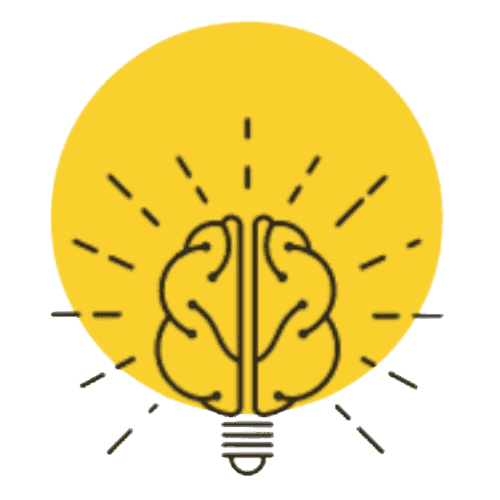New Delhi: In a landmark diplomatic engagement, Prime Minister Narendra Modi concluded his two-day state visit to Bhutan on Wednesday, leaving behind a trail of strengthened bilateral bonds, groundbreaking energy collaborations, and profound cultural exchanges. The visit, marked by the joint inauguration of the 1,020 MW Punatsangchhu-II hydroelectric project and the announcement of India’s first-ever concessional Line of Credit of ₹4,000 crore for Bhutan’s energy sector, has elevated the unique India-Bhutan partnership to unprecedented heights.

Punatsangchhu-II Hydroelectric Project: A Beacon of India-Bhutan Energy Cooperation
The centerpiece of Prime Minister Modi’s visit was the joint inauguration of the 1,020 MW Punatsangchhu-II hydroelectric project, a marvel of bilateral engineering executed alongside Bhutan’s King Jigme Khenpo Namgyel Wangchuck. Located on the Punatsangchhu River, the project will supply electricity to both India and Bhutan, reinforcing energy security in the region. The inauguration followed wide-ranging talks between the two leaders, underscoring the strategic convergence in sustainable energy development.
In a parallel development, both leaders welcomed the renewed momentum on the 1,200 MW Punatsangchhu-I hydroelectric project. After years of delays, work on the main dam has resumed, with both sides committing to its timely completion. Once operational, Punatsangchhu-I will become the largest jointly developed hydroelectric initiative between India and Bhutan, further solididing India’s role as Bhutan’s leading development partner.
India Extends ₹4,000 Crore Concessional Line of Credit for Bhutan’s Energy Sector
In a historic first, India announced a concessional Line of Credit of ₹4,000 crore dedicated to Bhutan’s energy sector. This landmark financial assistance—the first such line of credit extended by India to support Bhutan’s developmental aspirations—will fuel hydropower and renewable energy initiatives, enabling Bhutan to diversify beyond traditional hydropower dependencies. The announcement came during Prime Minister Modi’s meeting with King Jigme Khenpo Namgyel Wangchuck in Thimphu, where regional stability, border security, and sustainable growth dominated discussions.
Support for Bhutan’s 13th Five-Year Plan and Gelephu Mindfulness City
Beyond energy, India pledged unwavering support for Bhutan’s 13th Five-Year Plan, including the ambitious Economic Stimulus Programme. A key highlight was India’s backing for the visionary Gelephu Mindfulness City—a futuristic urban project rooted in Bhutanese values of mindfulness, sustainability, and Gross National Happiness. This endorsement reflects India’s commitment to Bhutan’s holistic development model, blending economic growth with cultural and environmental preservation.
Cultural Diplomacy: Holy Piprahwa Relics of Lord Buddha Exhibited in Thimphu
In a gesture of profound spiritual significance, India facilitated the public exhibition of the sacred Holy Piprahwa Relics of Lord Buddha in Thimphu. Discovered in 1898 in Piprahwa, Siddharthnagar (ancient Kapilavastu), Uttar Pradesh, these relics—believed to be associated with the mortal remains of Lord Buddha—were displayed as a symbol of the deep-rooted Buddhist heritage shared by the two nations. Prime Minister Modi lauded the Bhutanese leadership for the warm welcome accorded to the relics, describing the moment as a celebration of centuries-old spiritual bonds.
Kālacakra Empowerment Ceremony: A Global Prayer for Peace
Prime Minister Modi, alongside King Jigme Khenpo Namgyel Wangchuck and the Fourth Druk Gyalpo Jigme Singye Wangchuck, inaugurated the Kālacakra Empowerment ceremony as part of the ongoing Global Peace Prayer Festival in Thimphu. Presided over by His Holiness the Je Khenpo, the ‘Wheel of Time’ ritual drew Buddhist scholars and devotees from across the world. In a social media post, PM Modi described the ceremony as “even more special” due to the Je Khenpo’s presence, emphasizing its role in fostering global harmony.
Connectivity Breakthroughs: Cross-Border Rail Links in Focus
Enhancing physical and digital connectivity emerged as a key pillar of the visit. Discussions centered on proposed cross-border rail links, including the Gelephu-Kokrajhar and Samtse-Banarhat routes, aimed at boosting trade, tourism, and people-to-people contacts. Additionally, both sides welcomed the progress on Phase II of the Unified Payments Interface (UPI) integration, enabling Bhutanese visitors to India to make seamless digital payments using local apps.
MoUs in Renewable Energy, Mental Health, and Healthcare
Three Memoranda of Understanding (MoUs) were exchanged during the visit, covering renewable energy, mental health services, and healthcare collaboration. These agreements signal a broadening of bilateral ties beyond traditional sectors, addressing emerging challenges in public health and sustainable energy.
STEM, Fintech, and Space: New Frontiers of Collaboration
Prime Minister Modi and his Bhutanese counterpart, Dasho Tshering Tobgay, expressed satisfaction with the expanding partnership in Science, Technology, Engineering, and Mathematics (STEM), fintech, and space cooperation. The successful implementation of the Joint Plan of Action on Space Cooperation was highlighted, alongside the pivotal role of Indian teachers and nurses in strengthening STEM education and healthcare delivery in Bhutan.
Tribute to the Fourth Druk Gyalpo: 70th Birth Anniversary Celebrations
On Tuesday, Prime Minister Modi addressed a grand event at Changlimethang Stadium to commemorate the 70th birth anniversary of Bhutan’s Fourth Druk Gyalpo, Jigme Singye Wangchuck. Describing the occasion as “important,” PM Modi reiterated India’s commitment to the shared spiritual and cultural bond that has defined the relationship for centuries. Earlier in the day, he met the former king, appreciating his lifelong efforts in cementing India-Bhutan ties.
Strategic Convergence: Securing the Chicken Neck and Countering Regional Influences
Beneath the celebratory tone, strategic undercurrents were evident. The visit reaffirmed close coordination on regional stability, particularly concerning India’s Siliguri Corridor—commonly referred to as the “Chicken Neck.” The 2017 Doklam standoff remains a testament to the trust between the two nations in safeguarding mutual security interests. Discussions also touched on delays in hydropower projects, the need to diversify Bhutan’s economy beyond hydropower, and concerns over Chinese influence in the region.
Economic Interdependence: Trade, FDI, and Open Borders
India remains Bhutan’s largest trade partner, with bilateral trade (excluding electricity) reaching $1.7 billion in 2023-24—accounting for nearly 80% of Bhutan’s total trade. Indian FDI constitutes 55% of all foreign direct investment in Bhutan, underscoring deep economic linkages. The 1949 Treaty of Friendship, revised in 2007, continues to uphold mutual sovereignty, close cooperation, and open borders—a foundation that has nurtured one of South Asia’s most enduring partnerships.
A Royal Send-Off: King Jigme Khesar Sees Off PM Modi
In a special gesture symbolizing the warmth of India-Bhutan relations, King Jigme Khesar Namgyel Wangchuck personally accompanied Prime Minister Modi to Paro International Airport for his departure to New Delhi. The Ministry of External Affairs described the visit as one that “will further deepen the India-Bhutan bilateral friendship and advance cooperation in various areas.”
Looking Ahead: A Shared Vision for the Future
As Prime Minister Modi departed, the echoes of the Kālacakra chants, the hum of the newly inaugurated Punatsangchhu-II turbines, and the reverence for the Piprahwa Relics lingered in Thimphu’s crisp mountain air. The visit has not only addressed immediate developmental challenges but also laid a robust framework for a future defined by energy security, cultural synergy, and strategic alignment.
With the 1,200 MW Punatsangchhu-I project back on track, cross-border rail links in the pipeline, and digital payment ecosystems expanding, India and Bhutan are scripting a new chapter in their exemplary neighborhood diplomacy—one that balances tradition with modernity, spirituality with sustainability, and sovereignty with partnership.
FAQs
1. What is the Punatsangchhu-II hydroelectric project, and why is it significant for India and Bhutan?
The Punatsangchhu-II is a 1,020 MW hydropower project on the Punatsangchhu River, jointly inaugurated by PM Narendra Modi and Bhutan’s King Jigme Khesar Namgyel Wangchuck on November 11, 2025. It supplies electricity to both nations, strengthens energy security, and marks a major milestone in India-Bhutan renewable energy cooperation.
2. What does India’s ₹4,000 crore Line of Credit to Bhutan cover?
Announced during the visit, this is India’s first-ever concessional Line of Credit to Bhutan, exclusively dedicated to the energy sector. It will fund hydropower and renewable energy projects, helping Bhutan diversify beyond traditional hydropower and accelerate sustainable development.
3. What are the Holy Piprahwa Relics, and why were they exhibited in Thimphu?
The Piprahwa Relics, discovered in 1898 in Piprahwa, Uttar Pradesh (ancient Kapilavastu), are sacred artifacts believed to contain the mortal remains of Lord Buddha. They were publicly exhibited in Thimphu during PM Modi’s visit as a symbol of shared Buddhist heritage and to deepen cultural ties between India and Bhutan.
4. What is the Kālacakra Empowerment ceremony that PM Modi attended in Bhutan?
The Kālacakra (‘Wheel of Time’) Empowerment is a profound Buddhist ritual presided over by His Holiness the Je Khenpo. Held during the Global Peace Prayer Festival in Thimphu, it was jointly inaugurated by PM Modi, King Jigme Khesar, and the Fourth Druk Gyalpo on November 12, 2025, promoting global harmony and spiritual unity.
5. What new connectivity and digital initiatives were discussed during the India-Bhutan talks?
Both nations advanced cross-border rail links (Gelephu-Kokrajhar and Samtse-Banarhat) and welcomed Phase II of UPI integration, enabling Bhutanese visitors to use local apps for digital payments in India. Three MoUs were also signed in renewable energy, mental health, and healthcare.

